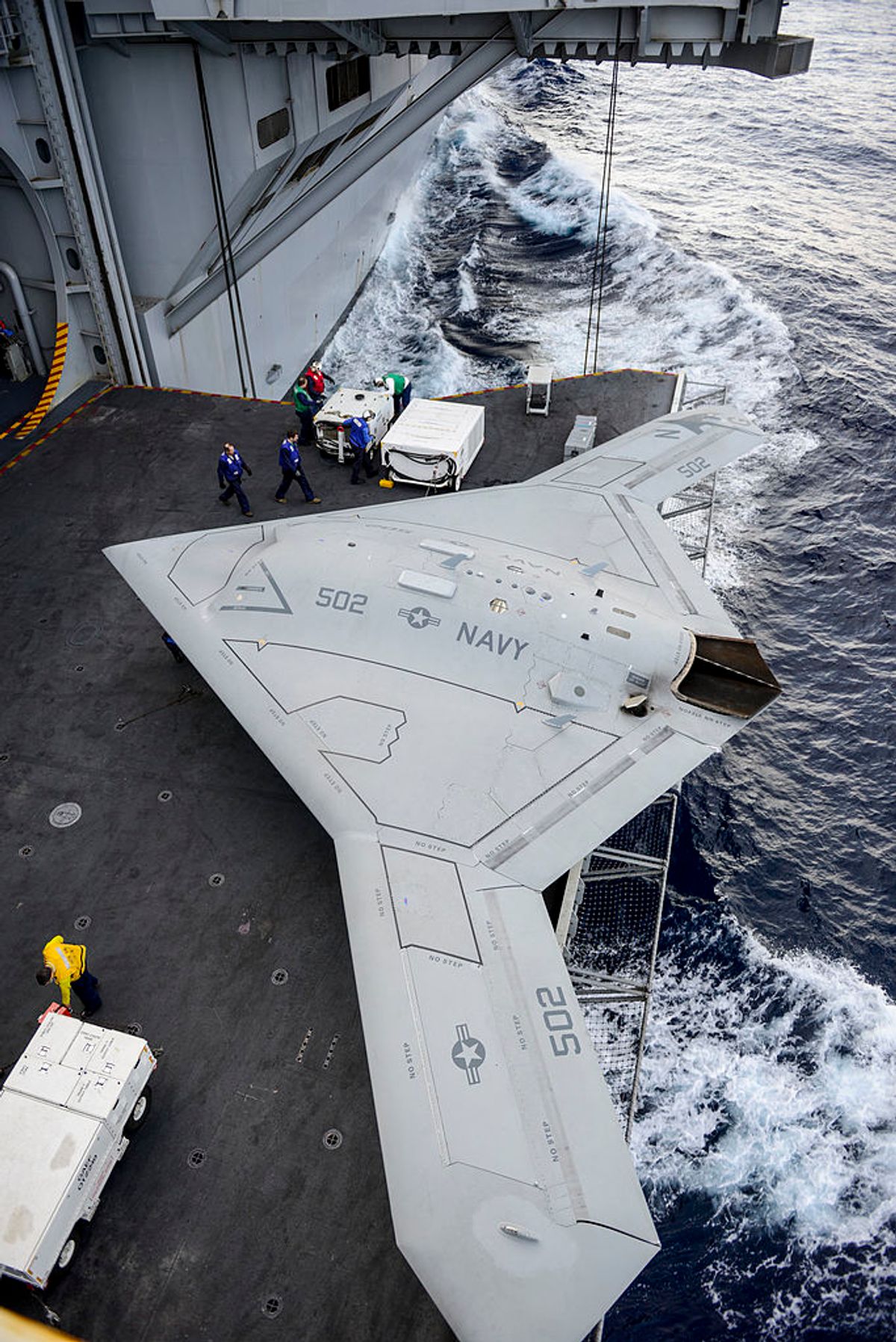The navy trial involved a Northrop Grumman X-47B plane, one of just two test models built as part of a US $1.8 billion program. As it is the policy to test each element of the plane's autonomous systems independently, today's flight concentrated on the catapult-assisted takeoff. It went without a hitch. This time, however, the flight was controlled remotely by a human, and the plane landed on a conventional runway, that is, on dry land.
Future flights will test the X-47B's ability to fly itself and land on a carrier. Overlapping optical and other sensors, together with GPS connections and internal maps, are designed to allow the plane to navigate and avoid mid-air collisions by itself. Human judgment takes over only when the plane is taxiing--a tricky shell game, played on a deck crowded with moving vehicles.
The plane's sleek, batlike airframe is designed to elude most radars, carry heavy bomb loads, and travel about twice as far as most manned fighters. That's just what the doctor ordered, because it would allow the Navy's floating islands, multi-billion-dollar behemoths all, to lurk at a healthy distance from shore-based missiles and other high-tech weaponry. Next year the Navy plans to test the unmanned plane's ability to refuel in mid-air, which it must do to manage truly long-distance flights.
There are many advantages to going pilotless. For one, it saves humans from getting killed or captured. For another, it allows a plane to make hairpin turns and other maneuvers that generate g-forces high enough to drain the blood from any head, right stuff or not. Finally, it saves on the weight of the many systems that protect the pilot.
Britain's less operatic but perhaps equally consequential feat took place last month, but was announced yesterday. A Jetstream airliner flew 800 kilometers with no intervention from the human pilot except during the takeoff and landing phases--all in commercial airspace. That British air-safety regulators allowed the test suggests that they think unmanned airliners are close enough to justify serious planning.
The flight was organized by a joint project of the U.K. government and local aerospace vendors called the Autonomous Systems Technology Related Airborne Evaluation and Assessment, or Astraea, which happens to be the name of a Greek goddess (the Brits have always had a lot of such coincidences).
Back in December, Lambert Dopping-Hepenstal, the director of Astraea, told Spectrum that the twin-turboprop, 18-seat Jetstream served as a "flying laboratory," with engineers on board to monitor everything. He said that the test vehicle hadn't been specially configured to take off and land autonomously, but that it could do so--as can any modern airliner.
"Here, though, you’ve taken the pilot away, and preprogrammed it to fly a route," he said. "In the event of comm failure, it will look after itself and follow the rules of the air in avoiding conflicting traffic."
Complete autonomy would require quite a lot of advances in the ability of a plane to sense and avoid danger in the air and on the ground, Dopping-Hepenstal added. "I’m not quite sure you’re rushing to an economic solution here, but rather doing things that are now difficult or impossible to do with manned aircraft--long endurance, extreme environmental environments. I’m not convinced by the short-term economic argument today."
Philip E. Ross is a senior editor at IEEE Spectrum. His interests include transportation, energy storage, AI, and the economic aspects of technology. He has a master's degree in international affairs from Columbia University and another, in journalism, from the University of Michigan.




